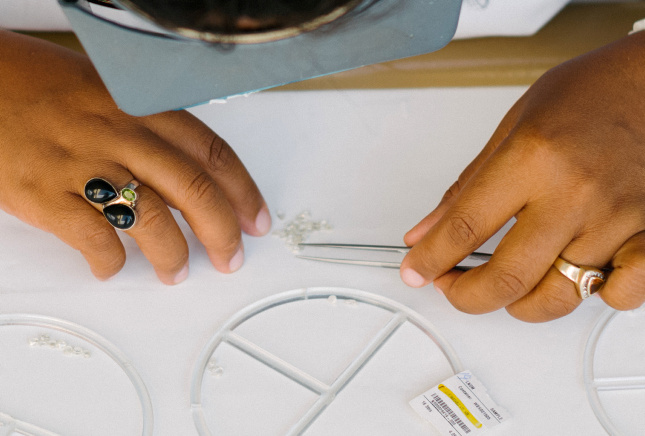The two largest diamond miners increased prices at this week’s rough sales as demand improved due to post-holiday restocking and strong trading ahead of the Chinese New Year.
De Beers raised prices by an average of 4% to 5% at its first sight of 2021, while Alrosa’s increases were around 6% to 7%, industry insiders told Rapaport News Monday. Both companies implemented steeper hikes in larger categories than for smaller goods, sources said.
“Alrosa makes sure that prices reflect the actual market trends and a confirmed real demand,” a spokesperson for the Russian miner said. De Beers declined to comment.
The miners have steadily been reversing the prices cuts they made in the second half of last year. De Beers’ price rise was its second in a row, with January prices almost back to pre-pandemic levels, sightholders noted.
The rough market showed momentum in January following a better 2020 holiday season than many had feared earlier in the year. Cutting factories in India raised polished production to full capacity as shortages emerged and retailers restocked, prompting manufacturers to buy rough in large quantities.
Demand rose on the secondary market, with De Beers clients able to make profits of 5% to 7% by reselling goods ahead of the sight. Those premiums declined slightly following the price increase.
“[Polished] inventory levels are the lowest for at least the past seven or eight years,” an executive at a sightholder said. “That’s the reason people are going to be more aggressive in their purchasing,” he continued, adding that some traders foresaw a spike in consumer demand due to government stimulus packages.
Prices at smaller miners’ tenders were higher still — in contrast to mid-2020, when manufacturers could get goods up to 25% cheaper on the open market compared with De Beers and Alrosa boxes. Tender prices fluctuate with the market conditions more than contract-sale prices do, as the smaller rough producers have greater liquidity needs.
Some traders expressed concern that the surge in rough purchases could lead to an oversupply, as Chinese retailers have almost finished preparing their inventories for the upcoming lunar festival on February 12.
“It’s time to go back to business, but it’s no time to push your production to the max and buy rough at any price with the excuse that your factory needs it,” another sightholder argued. “The end of year has been OK, including in the States. There are great expectations for a fantastic Chinese New Year, but the reality is that any Chinese retailer has stopped buying as from this week.”
Amid the uncertainty, Alrosa kept its policy of allowing customers to defer 100% of their allocations in January, noting that it wished to uphold the balance between supply and demand.
De Beers also allowed sightholders to refuse a proportion of their allocations for goods up to around 0.75 carats, while maintaining its standard flexibility — including 10% buybacks — in larger categories.
De Beers’ sight began on Monday in Botswana and runs until Friday, with viewings also taking place in Antwerp and Dubai. Alrosa’s sale started last Friday and continues for a week.
Source: Diamonds.net









